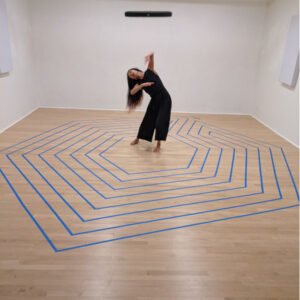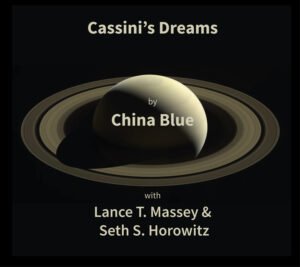- Page List
- Listening to Saturn: The Science
- Implementing Science with Art
- “Cassini’s Dreams” an Album
- At NASA Recording Mach 15 Impacts
- About Seth S. Horowitz, PhD and Lance T. Massey
Listening to Saturn: The Science
We have been in awe at the uniqueness of the planet Saturn since Galileo’s first tenuous observations in 1610 and the Saturn system has remained a source of intrigue for centuries. Even as Huygens proposed that the planet was surrounded by an enormous ring in 1659, it was another two centuries before James Clerk Maxwell demonstrated that these rings were in fact made of uncountable tiny particles in individual orbits about the planet.
Saturn is still one of the solar systems’ prime objects of wonder for scientists, artists and the general public. We have sent 3 spacecraft flying past Saturn, sending as high-resolution images as possible in the fleeting time before they continued out into the interstellar dark. It was not until 2007, when after a 10-year trip, driven by gravity assists from Venus, Earth and Jupiter that the Cassini craft settled into her mission orbiting the ringed planet and began unlocking some of its secrets.
Over its 20-year mission, Cassini sent back over 400 gigabytes of raw data including over 400,000 images of Saturn, her rings and moons. The vast majority of this information was in the form of black and white images, manipulated to form elegant full color portraits and movies of the unEarthly beauty of the Saturn system. However, the sheer magnitude of new information and the unexpected form much of it took, begged for new ways to explore the planet and the data.
In 2018 artist China Blue and Brown University Professor, Dr. Seth S. Horowitz received a NASA grant to do just that; explore Saturn’s rings. Their hope was to find potential sonic events which occurred there. And indeed, they did. By searching through the data that Cassini downloaded during her mission they found the bases of sonic events occurring there. These events included the particle behavior surrounding some of the moons embedded in the rings, moonlet created propeller disturbances and the “spokes,” charged particles that are move with Saturn’s rotating magnetic field to name a few.
Implementing Science with Art

This research became the basis of “Saturn Walk: Embodying Listening” that will be exhibited in the 2024 Venice Biennale.
This research was also used as the basis for the album “Cassini’s Dreams.” This album is a rich audio experience, built from raw data and artistic interpretation of the two decades of Cassini’s tour. There she was our virtual eyes and ears on Saturn. As the probe swept past the gas giant, traveling above and below her rings, swooping down on moons to fly through icy plumes, above methane oceans, past shepherd moons guiding ring particles in their orbits and spying on propeller moons as they create delicate internal structures and waves. These were two decades of wonder and data collected, until Cassini finally plunged in her death throes into the cold cloud tops of the planet itself. “Cassini’s Dreams” lets you join Cassini in her exploration of the giant ringed planet nine times as far from the sun as we here on Earth.
“Cassini’s Dreams” an Album
Produced by China Blue, Seth Horowitz, PhD
and Lance T. Massey, Composer.
Listen here
Cassini’s Dreams is a musical interpretation of the experience of NASA’s Cassini spacecraft, humanity’s eyes and ears in space and around the planet Saturn for over 20 years. Cassini’s Dreams immerses the listener into the deep and complex dramas that occur around Saturn and in its vast rings, while her simple yet overachieving computer systems kept a lock on her home planet and sent back data full of wonder. A mixture of algorithmic and inspirational bases lets us listen to Cassini’s voyage interpreted by math and music.
- Introplanetary (:39) is a sonic interpretation of the quiet, emptiness Cassini experienced on her 10-year gravity driven slingshot maneuvers that took her by Venus, Earth and then Jupiter to get to Saturn.
- Hohmann’s Ballet (2:07). Cassini’s complex gravity dependent orbits put her and our ears swinging around and past the rings, plunging through the crystalline sounds of ice crystals and dust particles as they hit the space craft.
- Cassini’s Dream 1: Unveiling (3:47) Cassini’s Dreams are interpretations of individual explorations of the 7 main rings, starting with the relatively quiet structure of the outermost dim, yet dynamic F ring.
- Cassini’s Dream 2: Collecting Echoes (4:41). Cassini’s radar exploration of the rings and the surface of cloud-covered Titan helped her reveal structures invisible to cameras or far away human eyes.
- Cassini’s Dream 3: Propeller and Spokes (4:33). Here is a sonic exploration of some of the more unusual features of the rings, the “spokes,” charged particles trapped and moved with Saturn’s rotating magnetic field, and acoustic “prop wash” from the propeller moons, tumbling through the tiny particles of the rings.
- Cassini’s Dream 4: Small Orbits (3:57) Cassini’s data showed not only the grandeur of the rings, but also of the sixty-two known moons and numerous tiny moonlets orbiting within the rings themselves, creating a complex multibody acoustic ballet.
- Cassini Dream 5: Kamakazi Snowflakes (4:40) While most of the mass of the Saturn is tied up in the planet, rings and moons, uncountable numbers of tiny ice particles escape and fill the surrounding system, slamming into Cassini, telling a subtle and complex tale of gravity and energy.
- Cassini’s Dream 6: Grand Mumuration (3:21) Like birds flocking in a giant cloud of wings, the ring particles form an enormous planet-spanning field that orbits the planet in persistent flight.
- Surfing the Gap (1:42) As the ship dips between the rings and the planet it hears Saturn’s electromagnetic field and stray dust and ice particles that have escaped the rings.
- Cloudboarding (4:22) In her final moments, Cassini is sent to surf the Saturnian cloud decks to keep her from possibly contaminating the surface of the planets icy (and life bearing?) moons, using her last few ergs of energy to signal home until she briefly lights up the skies like a lightning flash before disappearing forever.
- Saturn Remains (1:00) Our eyes and ears around Saturn are gone (for now), leaving us with years-worth of information to inspire us to send out our next explorer. But Saturn remains, waiting in the dark.
At NASA Recording Mach 15 Impacts
Sounds of an Asteroid Impact
In 2009 China Blue & Dr. Seth Horowitz, a Brown University neuroscientist, recorded NASA’s Ames Vertical Gun both inside and outside the chamber with customized seismic, boundary (PZM) and ultrasonic microphones to capture the sonic footprint of a hypervelocity impact. The seismic microphones were placed both on the surrounding platform and against the central target. The boundary microphones were placed on the platform at 180 deg. from each other and the ultrasonic microphone was placed at the top of the chamber creating an array that would capture the full acoustic emission from multiple locations. The microphones were monitored live on separate channels and the recordings captured with state of the art computer software. Simultaneous binaural recordings on standard microphones were made to capture the ambient acoustics external to the chamber.
About Seth S. Horowitz, PhD and Lance T. Massey
Seth S. Horowitz, PhD was a neuroscientist with a Master’s degree in psychology, a Ph.D. in neuroscience from Brown University and a planetary research scientist also with Brown University. His research was funded by grants from the National Science Foundation, The Deafness Foundation and NASA. He has lectured in undergraduate and graduate classes in animal behavior, neuroethology, brain development, the biology of hearing, and the musical mind. His work has been covered in popular media including NPR’s Hear and Now and All Things Considered, the Boston Globe, Wired.com and numerous other online and print publications. His book “The Universal Sense: How Hearing Shapes the Mind” published by Bloomsbury received critical acclaim by Publisher’s Weekly and Nature. His New York Times article “The Science and Art of Listening” was one of the most emailed articles in 2012.
Lance Massey is the creative mind behind XCOR, LLC an experimental sound production company. Since the advent of digital music, Lance has pushed the edges of what is possible with sound. He is passionate, creative, and an unconventional composer who applies the avant-garde exploratory philosophy to modern pop. As a multi-passionate entrepreneur, he has achieved successes in both music and technology.
Massey is known for being the creator of the iconic T-Mobile ringtone, has worked with jazz greats Gil Evans and Masabumi Kikuchi and jammed with David Bowie. His music has ranked #1 in the App store in Health and Wellness for his neuroscience-based work. Creatively driven and endlessly curious, Lance’s work is a combination of technology, psychology and artistry.

